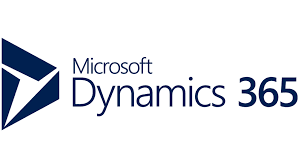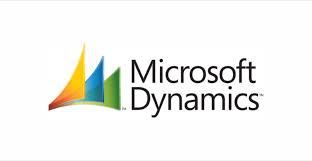Hardware and software requirements for SharePoint 2013
Updated: April 9, 2013
Summary: Lists the minimum hardware and software requirements to install and run SharePoint 2013.
Applies to: SharePoint Foundation 2013 | SharePoint Server 2013
In this article:
Summary: Lists the minimum hardware and software requirements to install and run SharePoint 2013.
Applies to: SharePoint Foundation 2013 | SharePoint Server 2013
|
|
|---|
|
If you contact Microsoft Customer Support Services
about a production system that does not meet the minimum hardware
specifications described in this document, support will be limited until
the system is upgraded to the minimum requirements. |
-
Overview
-
Hardware and software requirements for other SharePoint 2013 capabilities
-
Hardware requirements—location of physical servers
-
Hardware requirements—web servers, application servers, and single server installations
-
Hardware requirements—database servers
-
Software requirements
-
Optional software
-
Links to applicable software
-
Prerequisite installer operations and command-line options
|
|
|---|
|
The information in this article applies to SharePoint
Foundation 2013 and SharePoint Server 2013. For information about the
features that each version supports, see the SharePoint 2013 Product Page. Some of the hardware requirement values in this article are based on test results from SharePoint 2010 Products and still apply to SharePoint 2013. This article will be updated with appropriate values and republished when new data becomes available. Hardware requirement values obtained from SharePoint 2010 Products that are listed in this article do not apply to search in SharePoint 2013. This article links to SharePoint 2010 Products guidance where that guidance is still valid. The SharePoint 2010 Products guidance is not applicable for search in SharePoint 2013 because the search architecture has changed significantly. |
Overview
SharePoint 2013 provides for several installation scenarios.
Currently, these installations include single server with built-in
database installations, single-server farm installations, and
multiple-server farm installations. This article describes the hardware
and software requirements for SharePoint 2013 in each of these
scenarios.
Hardware and software requirements for other SharePoint 2013 capabilities
If you plan to use capabilities that are offered through
SharePoint 2013 or through other integration channels, such as SQL
Server or Exchange Server, you also need to meet the hardware and
software requirements that are specific to that capability. The
following list provides links to hardware and software requirements for
some SharePoint 2013 capabilities:
-
Hardware and software requirements for Project Server 2013
-
For eDiscovery, each front-end web server must have the
Exchange Web Services Managed API, version 1.2 installed. For more
information, see the following articles:
-
Software requirements for business intelligence in SharePoint Server 2013
-
Hardware requirements for search in SharePoint Server 2013:
-
Mobile device browsers supported in SharePoint 2013
Hardware requirements—location of physical servers
Some enterprises have data centers that are located in
close proximity to one another and are connected by high-bandwidth fiber
optic links. In this environment it is possible to configure the two
data centers as a single farm. This distributed farm topology is called a
stretched farm. Stretched farms for SharePoint 2013 are supported as of April 2013.
For a stretched farm architecture to work as a supported high-availability solution, the following prerequisites must be met:
For a stretched farm architecture to work as a supported high-availability solution, the following prerequisites must be met:
-
There is a highly consistent intra-farm latency of
<1ms one way, 99.9% of the time over a period of ten minutes.
(Intra-farm latency is commonly defined as the latency between the
front-end web servers and the database servers.)
-
The bandwidth speed must be at least 1 gigabit per second.
Hardware requirements—web servers, application servers, and single server installations
The values in the following table are minimum values for
installations on a single server with a built-in database and for web
and application servers that are running SharePoint 2013 in a multiple
server farm installation. For information about the deployment types
that are used in this table, see the SharePoint 2013: Deployment model.
You can download this model from the Install and deploy SharePoint 2013 (IT pros) resource center.
For all installation scenarios, you must have sufficient hard disk space for the base installation and sufficient space for diagnostics such as logging, debugging, creating memory dumps, and so on. For production use, you must also have additional free disk space for day-to-day operations. In addition, maintain two times as much free space as you have RAM for production environments. For more information, see Capacity management and sizing for SharePoint Server 2010.
For all installation scenarios, you must have sufficient hard disk space for the base installation and sufficient space for diagnostics such as logging, debugging, creating memory dumps, and so on. For production use, you must also have additional free disk space for day-to-day operations. In addition, maintain two times as much free space as you have RAM for production environments. For more information, see Capacity management and sizing for SharePoint Server 2010.
| Installation Scenario | Deployment type and scale | RAM | Processor | Hard disk space |
|---|---|---|---|---|
|
Single server with a built-in database or single server that uses SQL Server |
Development or evaluation installation of SharePoint
Server 2013 or SharePoint Foundation 2013 with the minimum recommended
services for development environments. For information, see Minimum recommended services for development environments. |
8 GB |
64-bit, 4 cores |
80 GB for system drive |
|
Single server with a built-in database or single server that uses SQL Server |
Development or evaluation installation of SharePoint
Server 2013 or SharePoint Foundation 2013 running Visual Studio 2012 and
the minimum recommended services for development environments. For
information, see Minimum recommended services for development environments. |
10 GB |
64-bit, 4 cores |
80 GB for system drive |
|
Single server with a built-in database or single server that uses SQL Server |
Development or evaluation installation of SharePoint Server 2013 running all available services. |
24 GB |
64-bit, 4 cores |
80 GB for system drive |
|
Web server or application server in a three-tier farm |
Pilot, user acceptance test, or production deployment of SharePoint Server 2013 or SharePoint Foundation 2013. |
12 GB |
64-bit, 4 cores |
80 GB for system drive |
Hardware requirements—database servers
The requirements in the following table apply to database servers in environments that have multiple servers in the farm.
| Component | Minimum requirement |
|---|---|
|
Processor |
|
|
RAM |
These values are larger than those recommended as the minimum values for SQL Server because of the distribution of data that is required for a SharePoint 2013 environment. For more information about SQL Server system requirements, see Hardware and Software Requirements for Installing SQL Server 2008 R2. |
|
Hard disk |
80 GB for system drive Hard disk space depends on how much content that you have in your deployment. For information about how to estimate the amount of content and other databases for your deployment, see Storage and SQL Server capacity planning and configuration (SharePoint Server 2010). |
Software requirements
The requirements in the following section apply to the following installations:
The Microsoft SharePoint Products Preparation Tool can
assist you in the installation of the software prerequisites for
SharePoint 2013. Ensure that you have an Internet connection, because
some prerequisites are installed from the Internet. For more information
about how to use the Microsoft SharePoint Products Preparation Tool,
see Install SharePoint 2013 on a single server with SQL Server and Install SharePoint 2013 across multiple servers for a three-tier farm.
-
Single server with built-in database
-
Server farm with a single server in the farm
-
Server farm with multiple servers in the farm
|
|
|---|
|
SharePoint 2013 does not support single label domain names. For more information, see Information about configuring Windows for domains with single-label DNS names. |
Minimum software requirements
This section provides minimum software requirements for each server in the farm.
Minimum requirements for a database server in a farm:
Minimum requirements for a database server in a farm:
-
One of the following:
-
The 64-bit edition of Microsoft SQL Server 2012.
-
The 64-bit edition of SQL Server 2008 R2 Service Pack 1
-
The 64-bit edition of Microsoft SQL Server 2012.
-
The 64-bit edition of Windows Server 2008 R2 Service
Pack 1 (SP1) Standard, Enterprise, or Datacenter or the 64-bit edition
of Windows Server 2012 Standard or Datacenter
-
The SharePoint parsing process crashes in Windows Server 2008 R2 (KB 2554876)
-
FIX: IIS 7.5 configurations are not updated when you use the ServerManager class to commit configuration changes (KB 2708075)
-
Hotfix: ASP.NET (SharePoint) race condition in .NET 4.5 RTM:
-
Windows Server 2008 R2 SP1 (KB 2759112)
-
Windows Server 2012 (KB 2765317)
-
Windows Server 2008 R2 SP1 (KB 2759112)
-
Microsoft .NET Framework version 4.5
-
The 64-bit edition of Windows Server 2008 R2 Service
Pack 1 (SP1) Standard, Enterprise, or Datacenter or the 64-bit edition
of Windows Server 2012 Standard or Datacenter
-
The SharePoint parsing process crashes in Windows Server 2008 R2 (KB 2554876)
-
FIX: IIS 7.5 configurations are not updated when you use the ServerManager class to commit configuration changes (KB 2708075)
-
Hotfix: ASP.NET (SharePoint) race condition in .NET 4.5 RTM:
-
Windows Server 2008 R2 SP1 (KB 2759112)
-
Windows Server 2012 (KB 2765317)
-
Windows Server 2008 R2 SP1 (KB 2759112)
-
The Setup program installs the following prerequisite for a single server with built-in database:
-
Microsoft SQL Server 2008 R2 SP1 - Express Edition
-
Microsoft SQL Server 2008 R2 SP1 - Express Edition
-
The Microsoft SharePoint Products Preparation Tool
installs the following prerequisites for a single server with built-in
database:
-
Web Server (IIS) role
-
Application Server role
-
Microsoft .NET Framework version 4.5
-
SQL Server 2008 R2 SP1 Native Client
-
Microsoft WCF Data Services 5.0
-
Microsoft Information Protection and Control Client (MSIPC)
-
Microsoft Sync Framework Runtime v1.0 SP1 (x64)
-
Windows Management Framework 3.0 which includes Windows PowerShell 3.0
-
Windows Identity Foundation (WIF) 1.0 and Microsoft Identity Extensions (previously named WIF 1.1)
-
Windows Server AppFabric
-
Cumulative Update Package 1 for Microsoft AppFabric 1.1 for Windows Server (KB 2671763)
-
Web Server (IIS) role
-
The 64-bit edition of Windows Server 2008 R2 Service
Pack 1 (SP1) Standard, Enterprise, or Datacenter or the 64-bit edition
of Windows Server 2012 Standard or Datacenter.
-
The SharePoint parsing process crashes in Windows Server 2008 R2 (KB 2554876)
-
FIX: IIS 7.5 configurations are not updated when you use the ServerManager class to commit configuration changes (KB 2708075)
-
Hotfix: ASP.NET (SharePoint) race condition in .NET 4.5 RTM:
-
Windows Server 2008 R2 SP1 (KB 2759112)
-
Windows Server 2012 (KB 2765317)
-
Windows Server 2008 R2 SP1 (KB 2759112)
-
The Microsoft SharePoint Products Preparation Tool
installs the following prerequisites for front-end web servers and
application servers in a farm:
-
Web Server (IIS) role
-
Application Server role
-
Microsoft .NET Framework version 4.5
-
SQL Server 2008 R2 SP1 Native Client
-
Microsoft WCF Data Services 5.0
-
Microsoft Information Protection and Control Client (MSIPC)
-
Microsoft Sync Framework Runtime v1.0 SP1 (x64)
-
Windows Management Framework 3.0 which includes Windows PowerShell 3.0
-
Windows Identity Foundation (WIF) 1.0 and Microsoft Identity Extensions (previously named WIF 1.1)
-
Windows Server AppFabric
-
Cumulative Update Package 1 for Microsoft AppFabric 1.1 for Windows Server (KB 2671763)
-
Web Server (IIS) role
Minimum requirements for client computers
-
A supported browser. For more information, see Plan browser support in SharePoint 2013. For information on browsers supported on mobile devices, see Mobile device browsers supported in SharePoint 2013.
Minimum recommended services for development environments
The following are the minimum SharePoint 2013 services
and service applications that are recommended for development
environments:
-
App Management service application
-
Central Administration web site
-
Claims to Windows Token service (C2WTS)
-
Distributed cache service
-
Microsoft SharePoint Foundation 2013 Site and Subscription Settings service
-
Secure Store Service
-
User Profile service application (SharePoint Server 2013 only)
Optional software
The optional software in this section is supported but is
not required to install or use SharePoint 2013. This software might be
required by capabilities such as business intelligence. For more
information about system requirements for other capabilities, see Hardware and software requirements for other SharePoint 2013 capabilities.
| Environment | Optional software |
|---|---|
|
Single server with built-in database, front-end web servers, and application servers in a farm |
|
|
Client computer |
|
Links to applicable software
To install Windows Server 2008 R2 SP1, Windows Server 2012,
SQL Server, or SharePoint 2013, you can go to the web sites that are
listed in this section. You can install most software prerequisites
through the SharePoint 2013 Start page. The software prerequisites are
also available from web sites that are listed in this section. You can
enable the Web Server (IIS) role and the Application Server role in
Server Manager.
In scenarios where installing prerequisites directly from the Internet is not possible you can download the prerequisites and then install them from a network share. For more information, see Install prerequisites for SharePoint 2013 from a network share.
In scenarios where installing prerequisites directly from the Internet is not possible you can download the prerequisites and then install them from a network share. For more information, see Install prerequisites for SharePoint 2013 from a network share.
-
Windows 7 and Windows Server 2008 R2 Service Pack 1 (SP1) (KB 976932)
-
Microsoft SharePoint Server 2013
-
Microsoft SharePoint Foundation 2013
-
Office 365 Enterprise
-
The SharePoint parsing process crashes in Windows Server 2008 R2 (KB 2554876)
-
FIX: IIS 7.5 configurations are not updated when you use the ServerManager class to commit configuration changes (KB 2708075)
-
Hotfix: ASP.NET (SharePoint) race condition in .NET 4.5 RTM:
-
Windows Server 2012, Datacenter Edition or Standard Edition
-
Microsoft SQL Server 2008 R2 Service Pack 1
-
Microsoft .NET Framework version 4.5
-
Microsoft SQL Server 2008 R2 SP1 - Express Edition
-
Workflow Manager
-
WCF Data Services 5.0 for OData
-
Microsoft Information Protection and Control Client (MSIPC)
-
Windows Management Framework 3.0 which includes Windows PowerShell 3.0
-
Microsoft Sync Framework Runtime v1.0 SP1 (x64)
-
Windows Identity Foundation 1.0 for Windows Server 2008 R2
-
Windows Identity Extensions for Windows Server 2008 R2
-
Microsoft SQL Server 2008 R2 Feature Pack which includes the Microsoft SQL Server 2008 R2 SP1 Native Client and the SQL Server Remote BLOB Store
-
Microsoft SQL Server 2008 R2 SP1 Feature pack which includes Microsoft SQL Server 2008 R2 ADOMD.NET
-
Microsoft Silverlight 3
-
Exchange Web Services Managed API, version 1.2
-
Microsoft SQL Server 2012 Native Client 64-bit edition – ENU\x64\sqlncli.MSI
-
Microsoft SQL Server 2012 Data-Tier Application (DAC) Framework 64-bit edition – ENU\x64\dacframework.msi
-
Microsoft SQL Server 2012 Transact-SQL ScriptDom 64-bit edition – SQLDOM.msi
-
Microsoft System CLR Types for Microsoft SQL Server 2012 64-bit edition – SQLSysClrTypes.msi
-
Microsoft SQL Server 2012 with Service Pack 1 (SP1)
LocalDB 64-bit edition, which is also a component of SQL Server 2012
with Service Pack 1 (SP1) Express – ENU\x64\SqlLocalDB.msi
Prerequisite installer operations and command-line options
The SharePoint 2013 prerequisite installer
(prerequisiteinstaller.exe) installs the following software, if it has
not already been installed on the target server, in this order:
-
Microsoft .NET Framework version 4.5
-
Windows Management Framework 3.0
-
Application Server Role, Web Server (IIS) Role
-
Microsoft SQL Server 2008 R2 SP1 Native Client
-
Windows Identity Foundation (KB974405)
-
Microsoft Sync Framework Runtime v1.0 SP1 (x64)
-
Windows Identity Extensions
-
Microsoft Information Protection and Control Client
-
Microsoft WCF Data Services 5.0
-
Windows Server AppFabric
-
Cumulative Update Package 1 for Microsoft AppFabric 1.1 for Windows Server (KB 2671763)
-
/? Display command-line options
-
/continue This is used to tell the installer that it is continuing from a restart
-
/unattended No user interaction
-
/SQLNCli:<file> Install Microsoft SQL Server 2008 SP1 Native Client from <file>
-
/PowerShell:<file> Install Windows Management Framework 3.0 from <file>
-
/NETFX:<file> Install Microsoft .NET Framework version 4.5 from <file>
-
/IDFX:<file> Install Windows Identity Foundation (KB974405) from <file>
-
/IDFX11:<file> Install Windows Identity Foundation v1.1 from <file>
-
/Sync:<file> Install Microsoft Sync Framework Runtime SP1 v1.0 (x64) from <file>
-
/AppFabric:<file> Install Windows Server AppFabric from <file> (AppFabric must be installed with the options /i CacheClient,CachingService,CacheAdmin /gac)
-
/KB2671763:<file> Install Microsoft AppFabric 1.1 for Windows Server (AppFabric 1.1) from <file>
-
/MSIPCClient:<file> Install Microsoft Information Protection and Control Client from <file>
-
/WCFDataServices:<file> Install Microsoft WCF Data Services from <file>
Installation options
Certain prerequisites are installed by the prerequisite
installer with specific options. Those prerequisites with specific
installation options are listed below with the options that are used by
the prerequisite installer.
-
Windows AppFabric
/i CacheClient,CachingService,CacheAdmin /gac
-
Microsoft WCF Data Services
/quiet





